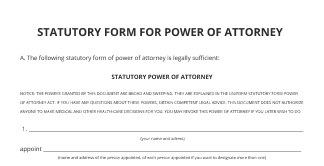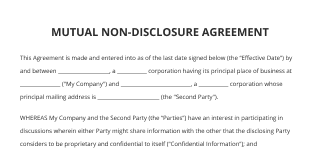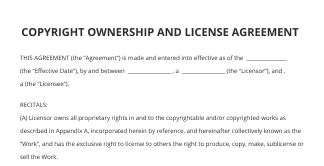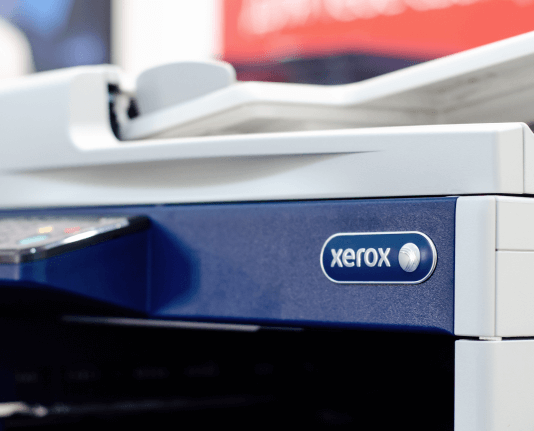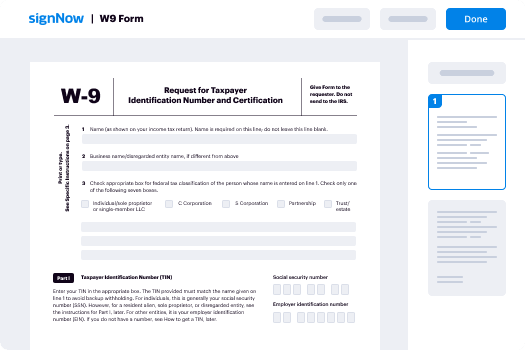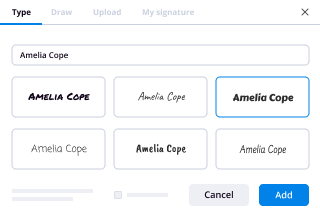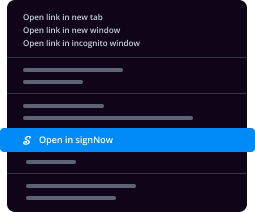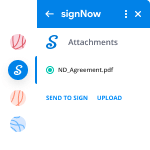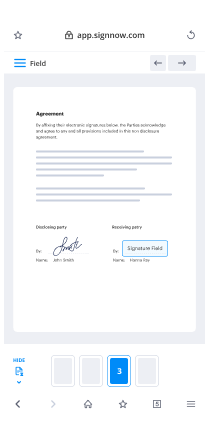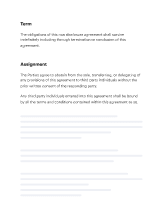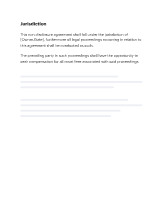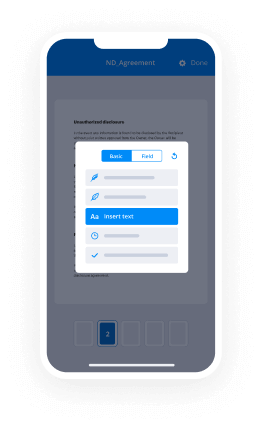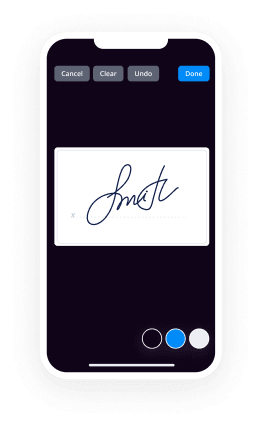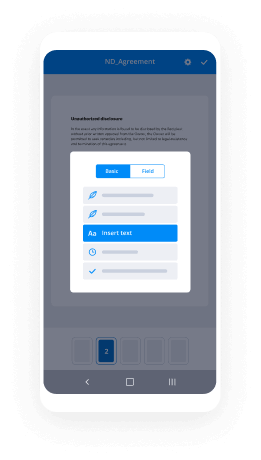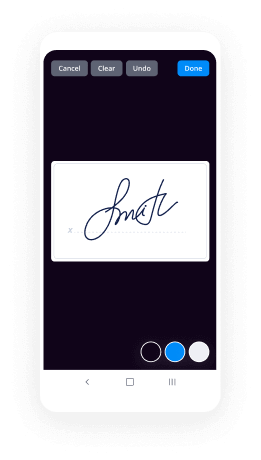Firma De Llamada Con airSlate SignNow
Obtenga las potentes funciones de firma electrónica que necesita de la empresa en la que confía
Elija el servicio profesional creado para profesionales
Configure la API de firma electrónica con facilidad
Colabore mejor juntos
Firma de llamada, en unos minutos
Reduzca el tiempo de cierre
Mantenga los datos sensibles seguros
Vea las firmas electrónicas de airSlate SignNow en acción
Soluciones de airSlate SignNow para una mayor eficiencia
Las reseñas de nuestros usuarios hablan por sí mismas






Por qué elegir airSlate SignNow
-
Prueba gratuita de 7 días. Elige el plan que necesitas y pruébalo sin riesgos.
-
Precios honestos para planes completos. airSlate SignNow ofrece planes de suscripción sin cargos adicionales ni tarifas ocultas al renovar.
-
Seguridad de nivel empresarial. airSlate SignNow te ayuda a cumplir con los estándares de seguridad globales.

Tu guía paso a paso — call signeture
Al emplear la firma electrónica de airSlate SignNow, cualquier organización puede acelerar los flujos de trabajo de firma y firmar en línea en tiempo real, ofreciendo una experiencia mejorada a clientes y empleados. realizar firma en unos pocos pasos sencillos. Nuestras aplicaciones con enfoque móvil hacen posible trabajar en movimiento, ¡incluso sin conexión! Firma electrónicamente contratos desde cualquier lugar del mundo y completa acuerdos más rápidamente.
Cómo completar y firmar un call signatures
- Inicia sesión en tu cuenta de airSlate SignNow.
- Encuentra tu registro en tus carpetas o importa uno nuevo.
- la plantilla y realiza ediciones usando la lista Herramientas.
- Arrastra y suelta cuadros rellenables, escribe texto y firma.
- Incluye varios firmantes por correo electrónico y configura el orden de firma.
- Especifica qué destinatarios recibirán un documento ejecutado.
- Utiliza Opciones avanzadas para limitar el acceso al registro y establecer una fecha de vencimiento.
- Presiona Guardar y cerrar cuando termines.
Además, hay herramientas más avanzadas disponibles para realizar firma. Incluye usuarios en tu entorno de trabajo compartido, navega por equipos y realiza un seguimiento de la cooperación. Millones de usuarios en todo Estados Unidos y Europa concuerdan en que una solución que integra todo en un espacio de trabajo holístico, es exactamente lo que las empresas necesitan para mantener los flujos de trabajo funcionando sin esfuerzo. La API REST de airSlate SignNow te permite integrar firmas electrónicas en tu aplicación, sitio web, CRM o en la nube. Prueba airSlate SignNow y obtén flujos de trabajo de firma electrónica más rápidos, suaves y en general más productivos.
Cómo funciona
Funciones de airSlate SignNow que los usuarios adoran
Vea resultados excepcionales to manage call signature
¡Obtenga firmas legalmente vinculantes ahora!
Preguntas frecuentes expected call signature
-
¿Qué quieres decir con firma de método?
En Java, una firma de método es parte de la declaración del método. ... Es la capacidad de escribir métodos que tengan el mismo nombre pero acepten diferentes parámetros. El compilador de Java puede discernir la diferencia entre los métodos a través de sus firmas de método. -
¿Qué es la firma de función en C?
Las firmas de funciones son la "declaración" de las funciones en un programa. La declaración de una función indica al compilador cómo llamar a una función. Las declaraciones de funciones comprenden lo siguiente: Nombre de la función. Tipo de retorno: tipo del valor que se devolverá al programa cuando se ejecute la función. -
¿De qué consiste una firma de método en Java?
Firma de método en Java Una firma de método es una identificación única de un método para el compilador de Java. La firma consiste en un nombre de método, y el tipo y tipo (valor, referencia o salida) de cada uno de sus parámetros formales. La firma del método no incluye el tipo de retorno. -
¿Qué es una firma de clase?
Tipo Gráfico. firma de Clase { } Una firma es una descripción estática de la lista de parámetros de un objeto de código. Es decir, describe qué y cuántos argumentos necesitas pasar al código o función para llamarla. Pasar argumentos a una firma vincula los argumentos, contenidos en una Captura, a la firma. -
¿Qué es un método principal?
El método main(). Una aplicación Java es una clase Java pública con un método main(). El método main() es el punto de entrada en la aplicación. La firma del método siempre es: public static void main(String[] args) Los argumentos de línea de comandos se pasan a través del parámetro args, que es un array de String. -
¿Qué es la firma en la sobrecarga de métodos?
La firma de un método no está compuesta por su tipo de retorno ni su visibilidad ni las excepciones que puede lanzar. La práctica de definir dos o más métodos dentro de la misma clase que comparten el mismo nombre pero tienen diferentes parámetros se llama sobrecarga de métodos. -
¿Qué quieres decir con métodos? Explica brevemente.
Un método es una subrutina adjunta a una clase específica definida en el código fuente de un programa. Es similar a una función, pero solo puede ser llamada por un objeto creado a partir de una clase. ... Los métodos dentro de una clase solo pueden ser llamados por objetos creados a partir de la clase. -
¿Por qué se llaman argumentos de función como firmas?
En C++, la lista de parámetros de una función se refiere como su firma. El nombre y la firma de una función la identifican de manera única. Como sugiere la palabra misma, la firma de la función es utilizada por el compilador para distinguir entre las diferentes instancias de funciones sobrecargadas. -
¿Cuál es la firma de una función en C++?
Firma de función La firma de una función incluye el nombre de la función y el número, orden y tipo de sus parámetros formales. Dos funciones sobrecargadas no deben tener la misma firma. El valor de retorno no forma parte de la firma de una función. -
¿Qué es una firma en programación?
En el lenguaje de programación Java, una firma de método es el nombre del método y el número, tipo y orden de sus parámetros. Los tipos de retorno y las excepciones lanzadas no se consideran parte de la firma del método. -
¿Qué quieres decir con firma de función?
Una firma de función (o firma de tipo, o firma de método) define la entrada y salida de funciones o métodos. Una firma puede incluir: parámetros y sus tipos. ... información sobre la disponibilidad del método en un programa orientado a objetos (como las palabras clave public, static, o prototype). -
¿Qué es una firma de índice?
Firmas de índice En TypeScript, para obtener un índice de un objeto, el tipo de ese objeto debe incluir una firma de índice. Las firmas de índice se usan a menudo para definir objetos utilizados como diccionarios, como el que tenemos aquí. Un tipo de firma de índice se ve así: type Dictionary = { [index: string]: string } -
¿Qué incluye una firma de función?
Firma de función La firma de una función incluye el nombre de la función y el número, orden y tipo de sus parámetros formales. Dos funciones sobrecargadas no deben tener la misma firma. El valor de retorno no forma parte de la firma de una función. -
¿Qué es el duck typing en TypeScript?
Según TypeScript, Duck-Typing es un método/regla utilizada para verificar la compatibilidad de tipos para tipos de variables más complejos. ... La característica de duck-typing proporciona seguridad de tipos en el código TypeScript. A través de la regla de duck-typing, el compilador de TypeScript verifica si un objeto es igual a otro objeto o no. -
¿Qué puedo hacer con TypeScript?
TypeScript simplifica el código JavaScript, haciéndolo más fácil de leer y depurar. TypeScript es de código abierto. TypeScript proporciona herramientas de desarrollo altamente productivas para IDEs y prácticas de JavaScript, como la comprobación estática. TypeScript hace que el código sea más fácil de leer y entender."}}}
Lo que dicen los usuarios activos — call signeture
Búsquedas relacionadas con typescript function call signature
How to set call signature
okay then gang so we've already seen how to assign a type of function to a variable so that in the future this variable could hold any type of function now we can go one step further be more specific as to what type of function this variable can hold by specifying a function signature now a function signature basically describes the general structure of a function what arguments it takes in and what type of data it returns for example a function signature like this where we just have parentheses and arrow and then void this right here basically says that the function takes no arguments because there's no arguments right here and it returns void so let me do another example I'm going to comment out this thing right here and if that will do three examples one two three and the first one is going to be greet and I'm going to say that this is going to be a function and the function signature is going to look like this first of all it's going to take in two parameters a which must be a string and B which also must be a string and finally it's going to return void so in the future oops this function or rather this a variable can hold a function which follows this signature so I could say something like this greet is equal to a function and inside that function we have a name parameter which is a string and also a greeting parameter which is also a string now inside the function all I'm going to do is console dot log these two things to the console so inside a template string so we can output variables I want to first of all output the name variable which is this thing right here and by the way template strings we use in normal JavaScript a slightly newer feature we can use those in typescript as well just gives us a way to dynamically output data or variables inside the string itself so I'll say name says greeting so this right here this follows the signature we defined right here and that's why we don't get an error we have two parameters which are both strings a Be Named and great singer by the way just because we said a and B right here it doesn't mean that these have to be called a and B it just means that we have two parameters these can be called whatever you want x and y if you prefer doesn't really matter we're just saying that they have two parameters and they both must be strings which is what we have in this case and then finally we're returning void even though we don't explicitly say right here we're returning void typescript infers that we're returning void because we don't actually return anything so this is absolutely fine but if one of these right here was a number then it's not going to match this thing right here so then we get an error so it has to match this signature exactly so let's change that to string again and let's go and do another example so this time I'll say let's calc and we're going to define the type of function oops not clock calc we're going to define the type of function this must be so again parentheses then what parameters do we want well I'll say a must be a number B must be in number and C must be a string and then finally I also want to return a number from this function okay so it takes three parameters number number string and it returns a number at the end so now let's create this function calc is equal to a function and the first parameter is going to be number one and that has to be a number the second one is normal to that also has to be a number and the third one is going to be called action and that is a string now inside here we want to ultimately return a number but before we do that I'm going to say if and I'm going to check if action that we pass in is equal to add then what we're going to do is add the two numbers together and return that was so return num1 plus num2 so we are returning a number right here but we still get an error and that's because if action is not equal to add right here then we're not actually returning anything and it must always return a number so we need to attack on an else clause right here and say return norm one - none sir we'll say it could be any number and doing a - instead of addition so now the error go is because even if this is not add right here then we're still returning a number right here and again we could be explicit if we want by same number over here we don't have to because when we return something typescript infers that return type so this works but if we changed one of these to something like I don't know a string and this to a boolean then obviously these things are not going to work we get errors because now we're not matching the signature of this function type okay so let me change those back this must be number and I think this must be number as well yep okay cool so let's do one more example I'm gonna say let's log details and that is going to be a function whereby we have some kind of parameter I'm going to call it object in this case or object but you can call it what you want it doesn't matter that parameter must be equal to an object where we have a name property which is a string and also an aid property which is a number now this must also return void okay so let's try this out I'm going to say log details and set that equal to a function and I'm gonna say the parameter name is ninja because again remember it doesn't have to match we're just saying there must be one parameter here okay and this must be an object with a name and an age which both have string and number types so let me say now inside here we must have a name which is a string and also we must have an age which is a number like so and then this is going to return void so all I'll do is console dot log and will log out the ninja name inside a string template again and we'll first log out the ninja dot name and then we'll say is and then we'll log out the ninja dots age will say years old okay so this works because now we're taking in one parameter which is this kind of object it has a name property which is of type string and an age of type number we're not returning anything so therefore it returns void if this was something else though then it wouldn't work it wouldn't let us do that okay so we've seen how to use type aliases and we could do that right here we could say something like type ninja or even type person is equal to an object where we have a name which is a string and also an age which is a number and then what we could do down here is just say ninja is of type person like so and this is still valid even though we're not explicitly typing this out here it still matches this signature right here so if you wish you can get as specific as you like with these function types and signatures
Show morePreguntas frecuentes
¿Cuál es la definición de firma electrónica según la Ley ESIGN?
¿Cómo puedo firmar electrónicamente y enviar por correo un PDF fácilmente?
¿Dónde puedo firmar mis documentos?
Obtén más para call signature service
- Add initial
- Add digital sign
- Add signature block
- Carta de Adopción de Mascotas redline
- Carta de Invitación a la Iglesia redline
- Plantilla de Autoevaluación de Revisión de Desempeño redline
- Redline Work Completion Record
- Redline Vacation Bible School Registration Confirmation Letter
- ESignature with finger
- Firma con dedo
- Firma de correo electrónico de rechazo
- Firma de borrador
- Confirm eSignature
- Confirm signature
- Confirm sign
- Confirmar firma digital
- Confirmar firma
- Send signed
- Comentario firmado
- Firma digital
- Fax firmado
- Firma adelantada
- Forward signed
- Notarize eSignature
- Notarize esign
- Firma electrónica notarizada
- Firma notarizada
- Firma digital notarizada





